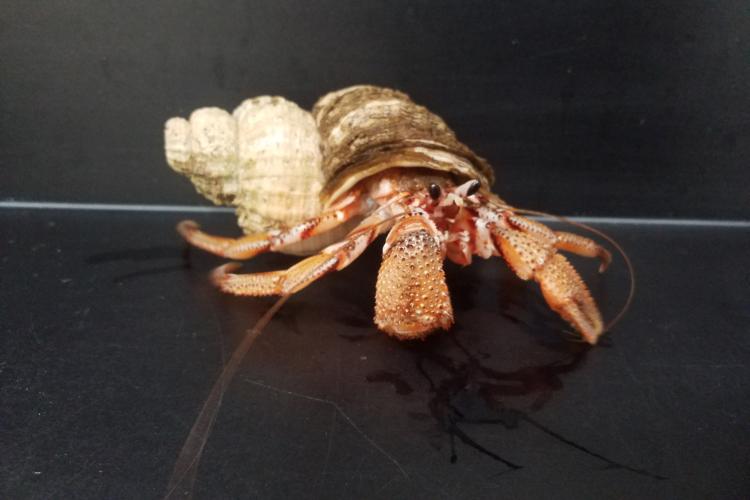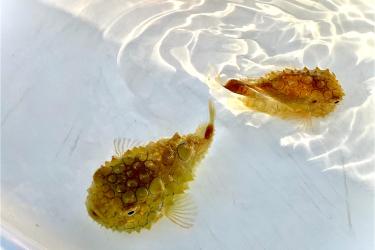Each year more than 15,000 people visit the Kodiak Laboratory.
One of the biggest attractions is our 3,500-gallon aquarium and touch tank.
Join us as we take our website visitors on a virtual tour to meet some of the unique and fascinating animals that live in our giant ocean tank.
Each month we will highlight a different marine species from invertebrates such as crabs or mollusks to sea stars (echinoderms) and fish.
Meet the Black Eyed Hermit Crab
Happy New Year to everyone!
Our featured touch tank critter this month is the Black Eyed Hermit crab! This is the biggest hermit crab that we have in our aquarium, and it can have a body-shell length of up to 5 cm.
As you may have guessed, the black eyed hermit crab got its name from its black, beady eyes. It can be found from Northern Alaska all the way down to Southern California, and usually lives in sandy or muddy bottoms from the tide pools that surround us on Kodiak all the way down to nearly 500 feet (150 m) deep!
Hermit crabs, like all crabs, are invertebrates, meaning they do not have a backbone. This allows them to curl up inside their shell to hide from predators. When they are young larvae, they search for a suitable home (usually a snail shell) to live in. As they grow, they look for larger shells and transfer into their new homes. Sometimes, if there are not many shells available, they will fight with other crabs in an effort to force them to give up their shell, or “evict” them from their home.
Hermit crabs are scavengers and will eat anything they can find, from seagrasses and dead animals to marine worms and invertebrates. As you can see from the photos, they have two different size claws, and this comes in handy when they are searching for love. A male will find a female, and hang on for dear life. He carries her around with his large claw until it is time for them to mate. These claws are also used for protection from predators and feeding.
Next time you are out tide pooling, snorkeling, or in a deep sea submarine 500 feet below the ocean’s surface, be sure to keep an eye out for these creatures! Their large size and vibrant colors are hard to miss!







